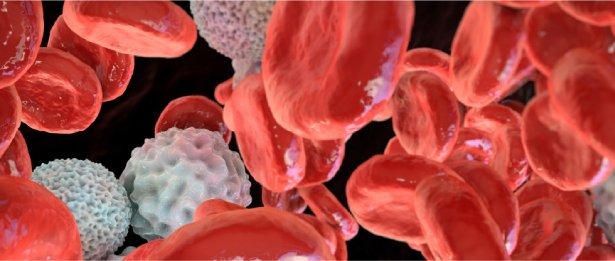Polycythemia

What is Polycythemia (Polycythemia Vera)?
Polycythemia, or polycythemia vera, refers to the detection of red blood cells, also called erythrocytes, above normal values in blood tests. For women, this is indicated by Hemoglobin >16 g/dl or Hematocrit >48%, and for men, Hemoglobin >16.5 g/dl or Hematocrit >48.5%.
What are the Symptoms of Polycythemia?
In patients with polycythemia, the increase in blood cells leads to increased blood viscosity and slowed blood flow. This significantly increases the risk of vascular occlusion. Patients commonly experience:
- Fatigue
- Early tiredness
- Dizziness
- Headaches
- Blurred vision
- Ringing in the ears
- Itching skin
- Excessive sweating
- Burning sensation in hands and feet
- Easy bruising and bleeding
Examinations may reveal increased blood pressure in some patients, as well as enlargement of the liver and spleen.
What Causes Polycythemia?
Polycythemia can be categorized into primary and secondary causes:
Primary Polycythemia
In primary polycythemia (polycythemia vera), there is an increase in red blood cell production in the bone marrow despite the body's lack of need for it, resulting in increased hemoglobin levels.
Secondary Polycythemia
Secondary polycythemia is often associated with situations where the body's oxygen demand increases. Conditions such as heart and lung diseases, sleep apnea syndrome, living at high altitudes, and smoking can lead to increased red blood cell counts. Athletes also tend to have higher hemoglobin levels compared to the general population. Additionally, drugs that stimulate erythropoietin, the hormone that stimulates blood production, and certain tumors can also cause polycythemia.
How is Polycythemia Diagnosed?
In patients with elevated blood levels, a diagnosis of primary polycythemia is made based on erythropoietin levels, JAK2 and/or JAK2 Exon 12 mutations, and bone marrow biopsy results. Approximately 80% of these patients have low or borderline erythropoietin levels, and 95-97% have a positive JAK2 gene mutation. If the JAK2 gene mutation is negative, analysis of JAK2 Exon 12 mutation is necessary. Bone marrow biopsy is a reliable test for diagnosis due to its ability to demonstrate excessive cell production in the bone marrow.
What is the Treatment for Polycythemia?
In the treatment of primary polycythemia (polycythemia vera) at Liv Hospital Hematology Clinic, priority is given to medications that increase blood flow (anticoagulants) and phlebotomy to reduce blood levels. If these treatments fail to achieve the desired results, drugs that suppress blood production in the bone marrow are used. In cases where the patient is older and/or vascular occlusion is present, medications that suppress blood production should be initiated along with phlebotomy and blood flow-enhancing drugs as soon as the diagnosis is made.
The treatment of secondary polycythemia focuses on addressing the underlying cause. Phlebotomy may be performed in patients with symptoms related to elevated blood levels.
